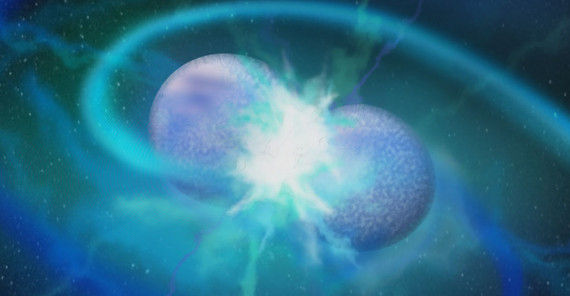Chasing hot stars, a German team of astronomers with participation of the University of Potsdam has discovered a new type of weird stars. While normal stars have surfaces composed of hydrogen and helium, the stars discovered by Prof. Klaus Werner of the University of Tübingen and his Potsdam colleagues have their surfaces covered with carbon and oxygen, the ashes of He-burning and a very exotic composition for a star. The situation becomes more puzzling because the new stars have temperatures and radii that indicate they are still burning helium in their cores.
“Normally we expect stars with these surface compositions to have already finished burning helium in their cores, and to be on their way to become white dwarfs. These new stars are a severe challenge to our understanding of stellar evolution”, explains Klaus Werner. The newly discovered stars were found as part of a large sky survey led by Prof. Stephan Geier from the University of Potsdam. “The aim of this survey was to find short-lived, hot stars, in order to better understand the final phases of stellar evolution. We take spectra of the stars, which we then analyze in order to determine, for example, their chemical composition”, explains Geier. These stars are very faint, thus, only large optical telescopes are used. The largest telescope that contributed to the discovery of these new stars is the Large Binocular Telescope in Arizona, consisting of two 8.4 meter primary mirrors.
These results are published in the last Monthly Notices of the Royal Astronomical Society. Published back to back with this paper a second paper from a group of astronomers from the University of La Plata (Argentina) and the Max Planck Institute for Astrophysics in Garching (Germany) offers a possible explanation for their formation. “We believe the stars discovered by our German colleagues might have formed in a very rare kind of stellar merger event between two white dwarf stars” says Miller Bertolami, lead author of the second paper. “We believe that, for binary systems formed with very specific masses, a carbon- and oxygen-rich white dwarf might be disrupted and accreted on top of a helium-rich one, leading to the formation of these stars”, adds the researcher.
Yet no current stellar evolutionary models can fully explain these stars, as Nicole Reindl from the University of Potsdam elaborates: “We need refined models to assess whether these mergers can actually happen. These could not only help us to better understand these stars, but could also provide a deeper insight into the late evolution of binary systems and how do their stars exchange mass as they evolve.” Until astronomers develop more refined models for the evolution of binary stars, the origin of the new discovered stars will be up for debate.
Link to the Publications:
Klaus Werner, Nicole Reindl, Stephan Geier, Max Pritzkuleit, Discovery of hot subdwarfs covered with helium-burning ash, Monthly Notices of the Royal Astronomical Society: Letters, Volume 511, Issue 1, March 2022, Pages L66–L71, https://doi.org/10.1093/mnrasl/slac005
M M Miller Bertolami, T Battich, A H Córsico, L G Althaus, F C Wachlin, An evolutionary channel for CO-rich and pulsating He-rich subdwarfs, Monthly Notices of the Royal Astronomical Society: Letters, Volume 511, Issue 1, March 2022, Pages L60–L65, https://doi.org/10.1093/mnrasl/slab134

